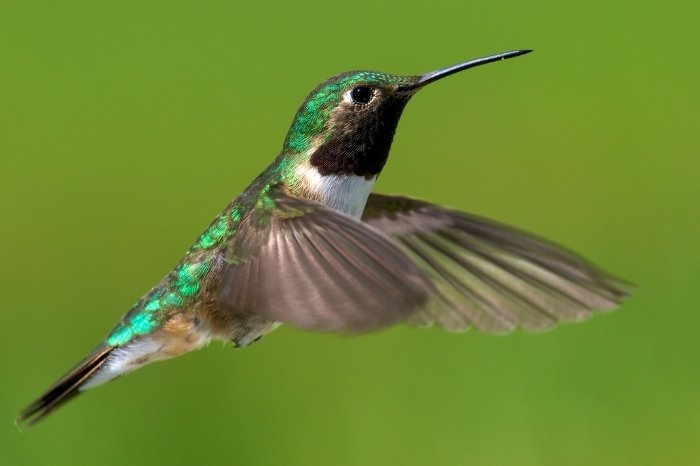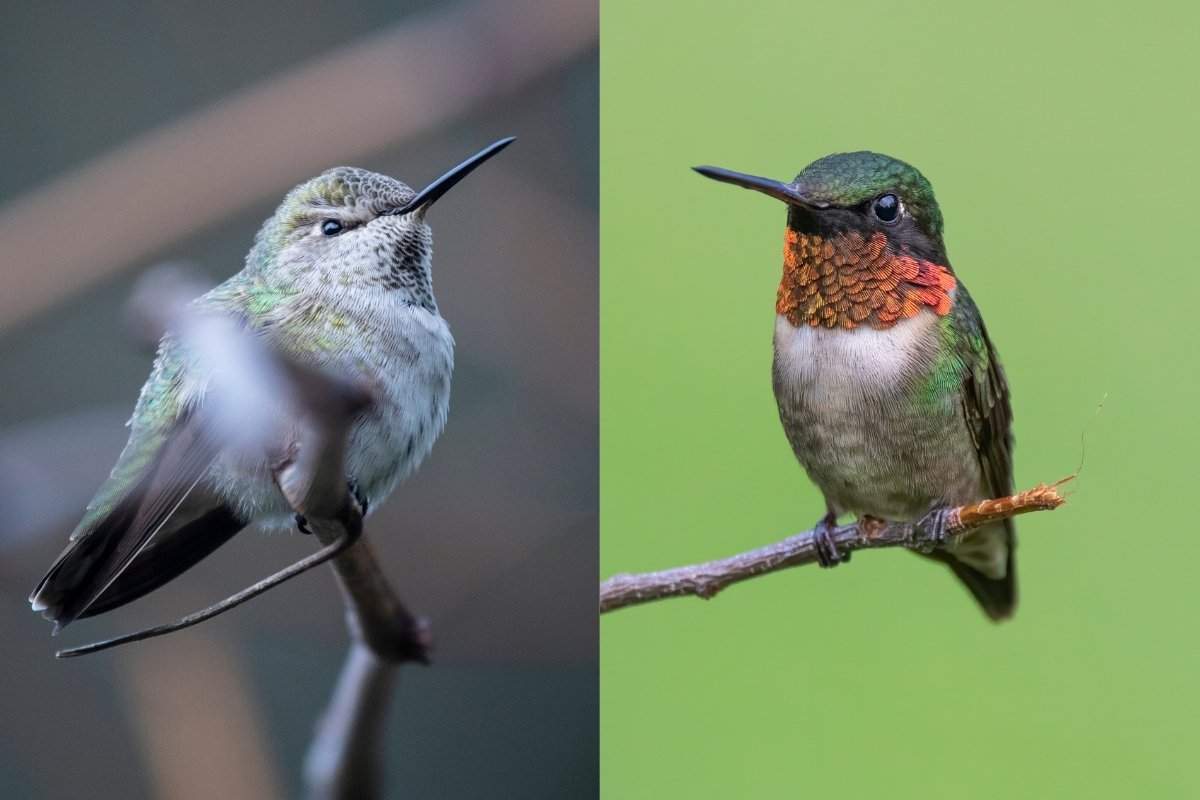Are you having trouble distinguishing the Broad Tailed hummingbird vs Ruby Throated hummingbird? You’re not alone; while expert bird watchers have mastered the recognition, many hummingbird enthusiasts are having a hard time.
Both birds are similar in size, with merely an inch difference. Their colors even though hard to spot are completely different. What’s surprising to learn is that they even sound different! We understand you can’t always hear the broad tailed hummingbird vs ruby throated hummingbird buzz, so here are some more tips for recognizing each bird!
The Broad-Tailed Hummingbird
Broad-tailed hummingbirds live in high meadows, foothills, plains, and forest edges. If you have a cabin in the woods, it’s not rare to see this hummingbird near your feeder! They mainly feed on flower nectar and insects, but when nectar is low, they turn to tree sap for their nutrients.
What flowers do broad-tailed hummingbirds like? This is the main difference between broad tailed hummingbird vs ruby throated hummingbird. The first ones don’t use the same flowers as other hummingbirds.

Broad-tailed hummingbirds stop to feed on sage, larkspur, currant, and glacier lily flowers. They will often visit trees with sap wells previously attacked by sapsuckers.
Female broad-tailed hummingbirds are good hunters. Once they mate, they need more protein, so they will snatch insects midair!
Check Out How Long Can A Bird Egg Live Without Warmth?
Where Can I Find Broad Tailed Hummingbirds
Broad-tailed hummingbirds live in the Western US and western Canada and migrate to Mexico and Guatemala. Hummingbirds have a great memory, and it’s not rare to have them return to the same feeder year after year. However, due to lack of food, climate change, and other circumstances, they might be seen in other parts of the US on occasion.
How to Identify a Broad Tailed Hummingbird
When comparing broad tailed hummingbird vs ruby throated hummingbird, we start with the physical characteristics. But what does a Broad-tailed Hummingbird look like?
It’s 4 to 4,25 inches long with a wingspan of 5 inches. The males are tinier and with specifically colored throat feathers. The females have a more dull color with an iridescent back, and both sexes have a white eye ring.
Read more about 7 Surprising Facts About Feathers
Threat Of Extinction
In the span of 49 years, the number of broad-tailed hummingbirds has decreased by 52%. While the bird still doesn’t face extinction, the huge decrease is due to unsuccessful breeding, climate change, and low winter survival.
The Hummingbird Handbook: Everything You Need to Know
Broad Billed Vs Broad Tailed Hummingbird
Broad tailed hummingbird vs ruby throated hummingbird is a common but not the only confusion. The broad-billed hummingbird is often mixed with the broad-tailed one.
If you still haven’t spotted one, you probably wonder, are broad billed hummingbirds rare? They’re not rare, but they’re seen only in a limited area. The broad-billed hummingbird loves the warmer weather, so they stay in the Arizona area and Mexico.
The Ruby-Throated Hummingbird
The ruby-throated hummingbird is not an uncommon sight, even during the winter. This resilient hummingbird is a faster flyer, lives, and breeds in the eastern US.
It’s on average 3.25 inches in size with a wingspan of 4.3 inches. They feed on the common hummingbird flowers, unlike the broad-tailed hummingbird. We might even say that ruby-throated hummingbirds are more domesticated as they spend the winters surviving on garden nectar feeders.
Click Here to Get Info About The 8 Best Solar Bird Bath Bubblers
Broad Tailed Hummingbird vs Ruby Throated Hummingbird
1. Size
The easiest way to tell apart broad tailed hummingbird vs ruby throated hummingbird is the size. Even the male broad-tailed hummingbird is significantly bigger than the male ruby-throated.
How big are broad-tailed hummingbirds? They’re between 4 and 4.25 inches long with a wingspan of 5.25 inches. Ruby-throated hummingbirds might have faster wing flaps, but they’re 3 to 3.25 inches long with a 3.1 to 4.3 inches wingspan.
2. Color
If you live in the east, you might not know what does a broad-tailed hummingbird look like. The male has pinkish throat feathers that might resemble the ruby-throated hummingbird on a cloudy day. But the ruby-throated male has a magenta-colored throat.
The female broad-tailed hummingbird has a striped neck, while the female ruby-throated has a plain throat.
The broad-tailed hummingbird has distinct facial features. Both sexes have a white spot on their chin and at the base of the bill and white eye-rings. When comparing faces, it’s easy to distinguish broad tailed hummingbird vs ruby throated hummingbird.
3. Sound
You probably didn’t know you can identify broad tailed hummingbird vs ruby throated hummingbird via their sound. We’re not talking about their song but their flight sound.
The ruby-throated hummingbird is smaller and faster and almost soundless when flying. On the other hand, the broad-tailed hummingbird is buzzing and loud!
4. Tail
Here’s one of the clearest differences between broad tailed hummingbird vs ruby throated hummingbird. The broad-tailed hummingbird, as the name suggests, has a larger rounded tail with rufous-colored tips.
Ruby-throated hummingbirds have a short, forked tail in a single color.

5. Location
The location of the broad tailed hummingbird vs ruby throated hummingbird varies completely. Ruby-throated hummingbirds tolerate lower temperatures and often overwinter in the US. They can be seen in the east parts of the US and Canada.
Broad-tailed hummingbirds stay on the opposite side in the west and rarely venture far away. As the fall approaches, they migrate to Guatemala and Mexico.
Both birds don’t share a territory, so they can rarely be spotted together.
Bottom Line
At first glance, it seems hard to tell apart broad tailed hummingbird vs ruby throated hummingbird. The male representatives seem to have the same throat color, and they’re so miniature to spot details.
However, these birds don’t overlap, so you’re probably seeing a ruby-throated hummingbird if you venture out in the east. You’ll catch the much more colorful and bigger broad-tailed hummingbird in the west.
FAQ’s
[rank_math_rich_snippet id=”s-13147233-42b1-4e52-9ab1-6ff9b047a5d9″]


